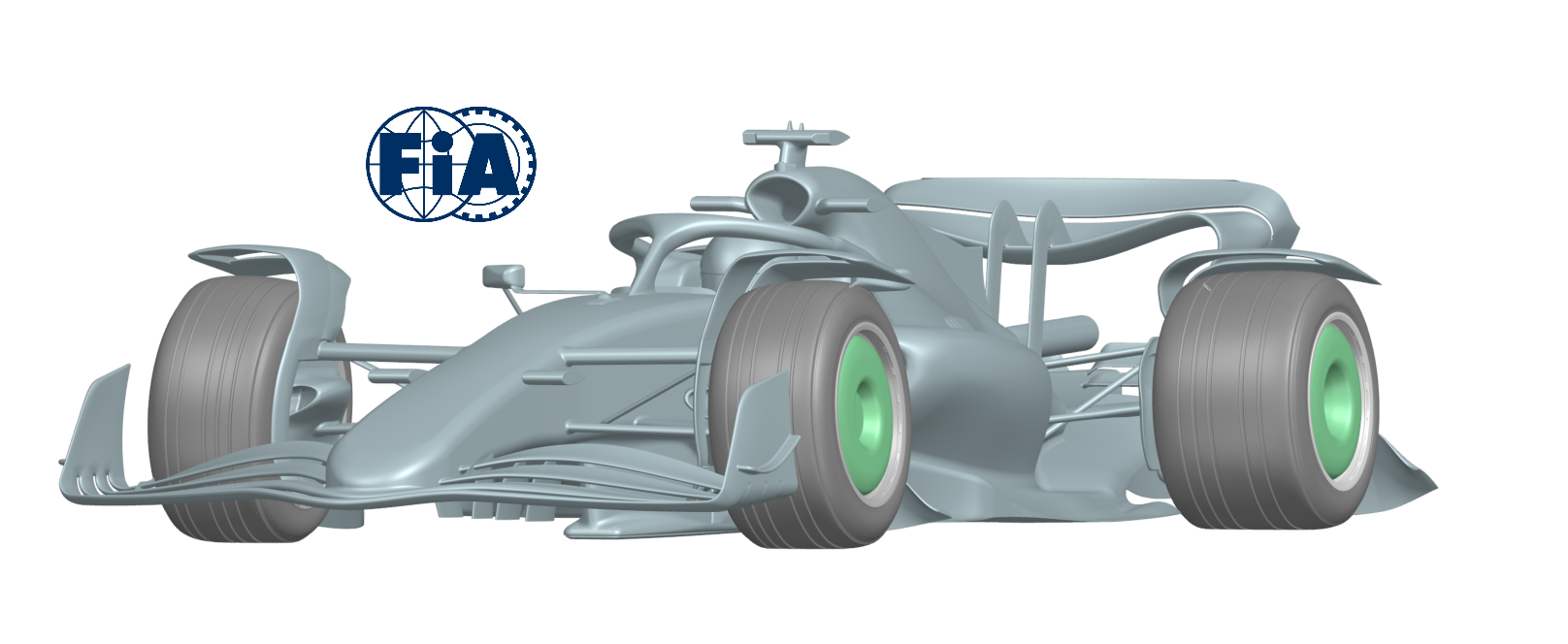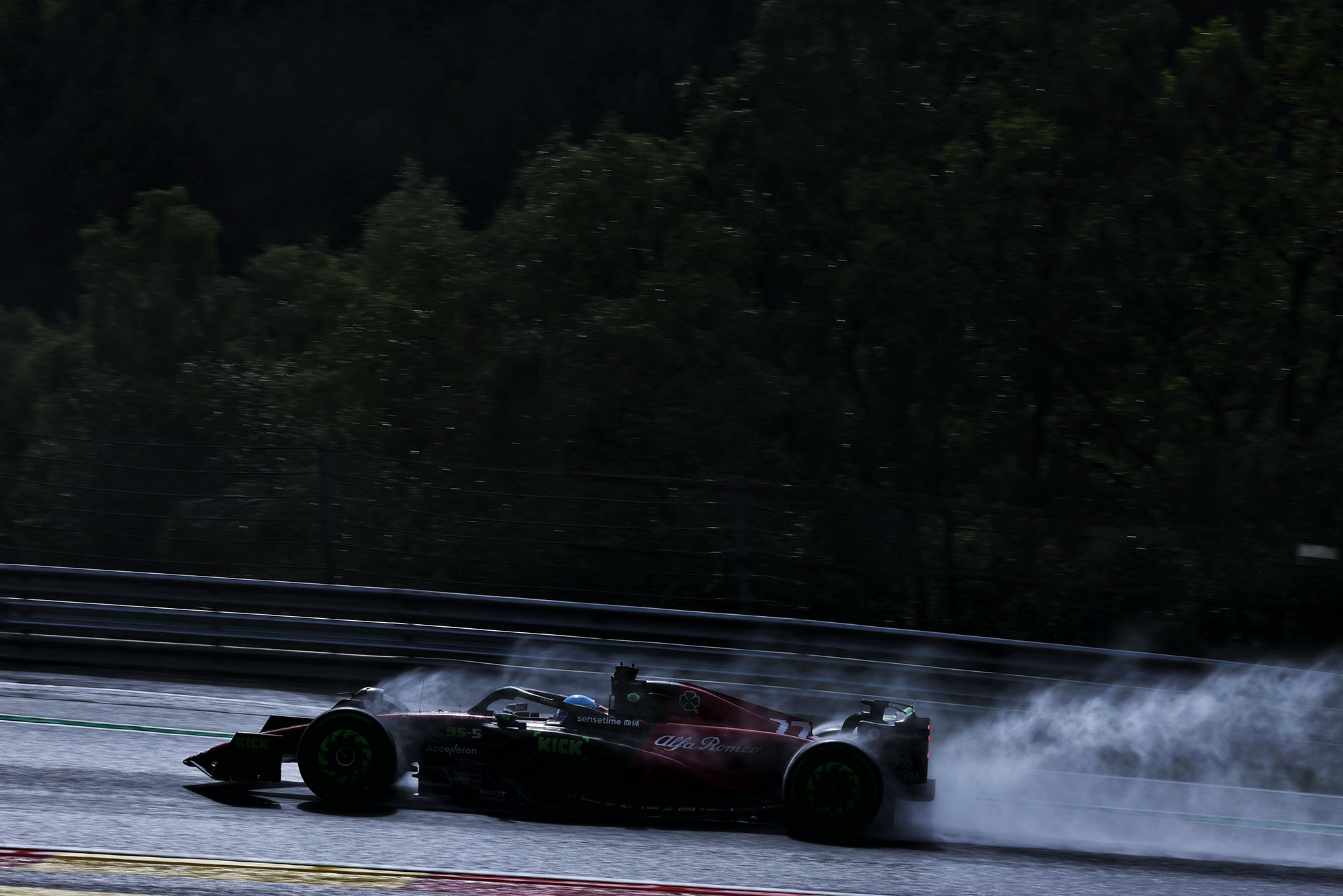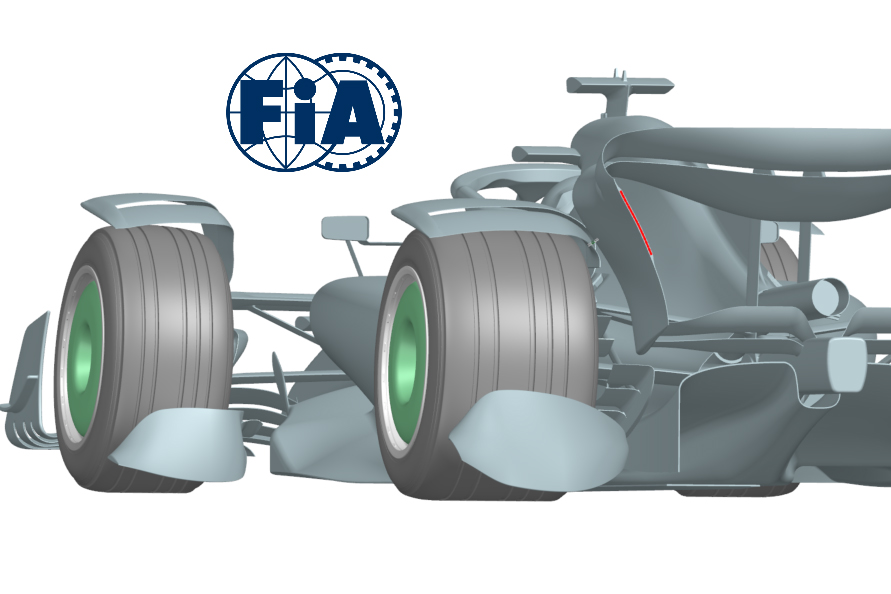Up Next

The legend of King Cnut, king of England from 1016-1035, has a lesson for the FIA: namely that you cannot hold back the tide.
For the FIA is attempting to gain dominion over the watery forces of nature with its ambitious ‘spray guard’ project designed to allow Formula 1 races to be run in extreme wet conditions.
The Cnut story is usually told as one of him hubristically trying to hold back the tide with his regal powers. But the original tale is actually one showing wisdom in Cnut consciously demonstrating his powers had limits and he did not have ultimate dominion over nature. The FIA has gone through a similar learning process.
The spray guards – or Wet Weather Package (WWP) project was launched late last year to create a standard-specification of wheel covers, which will be fitted only in extreme-wet conditions. FIA single-seater head Nikolas Tombazis admits this has proved a more difficult task than anticipated. But the FIA is pressing on.
Rightly so. It’s commendable that the FIA has taken on what appears to be a ‘moon shot’ project to attempt to tame the forces of nature. The water has to go somewhere and not all of it is thrown up by the tyres, so to achieve the target of reducing the spray by 50% is a big ask.
However, if a solution can be found it will be massively significant for F1. Running in wet conditions has become more and more difficult of late, with the dual limits of aquaplaning and impenetrable visibility, so either something must be done to change that or F1 gives up the fight and accepts that racing in the worst of conditions is not going to happen.
“We want to keep improving the sport,” says Tombazis, who is overseeing the project.
“Initially, we thought it was a bit easier than maybe it has turned out to be and I was certainly hoping that we would have sussed it out very quickly. But ultimately, we’ve got good people and they need to work even harder.”
Work is ongoing on a version two of the spray guards, which it’s hoped will be tested before the end of the year. And there are unquestionably directions that can be taken to potentially make improvements, as The Race’s technical expert Gary Anderson has outlined.

Work is ongoing in CFD, but this is not a normal aerodynamic challenge. The shape of the airflow is well understood, but the key is the amount of water droplets inside the flow field. As Tombazis says, “it’s actually quite complicated physics”.
That also extends to the amount of spray that is flung up from the diffuser. There’s anecdotal evidence from drivers that since the regulation change last year the spray has got worse, and it’s possible that the attempts to reduce the turbulent wake of cars has contributed the problem. And simply blocking the diffuser exit is a no-go because that would be catastrophic for the aero of the cars.

There’s also the challenge of minimising the aerodynamic disruption and weight of the bolt-on kits. It’s impossible for them to have no effect, but it has to be within a tolerable and acceptable level for teams and one that doesn’t create instability.
After all, it’s no good making the conditions safe to drive in by improving visibility if you are going to make the cars too unpredictable and in a worst-case-scenario even dangerous to drive.
There was a time when either this change would never have been attempted, or it would have been half-baked. Regulations have been modified in the past with minimal research and had unexpected consequences, but this project is being approached in exactly the right way by the FIA. There’s no hard and fast timeline for its introduction beyond when, and indeed if, it’s ready.
The first test of the spray guards was widely reported as a failure, and while that is not inaccurate it doesn’t reflect the nature of this process. As Tombazis puts it, “not many engineering projects work always on first go perfectly” and there will be further attempts based on the data gathered.
What is being attempted is hugely ambitious with several unchangeable parameters, notably the laws of physics, the volume of water that must somehow be tamed and what’s possible in terms of adaptations to the current cars. The FIA has learned the lesson of King Cnut and must work within those tight constraints.
Equally, those who criticised the perceived failure of the project so far must also understand Cnut’s message. The spray guards design is not something that can simply be willed into existence, but requires hard work and ingenuity in the face of forces that are immutable.





